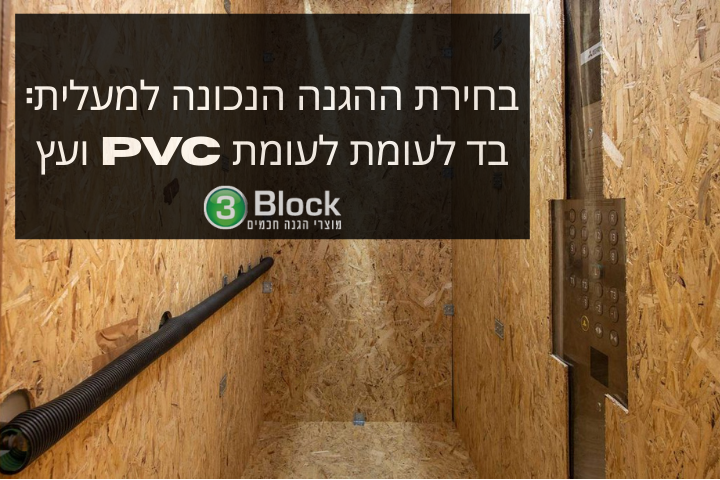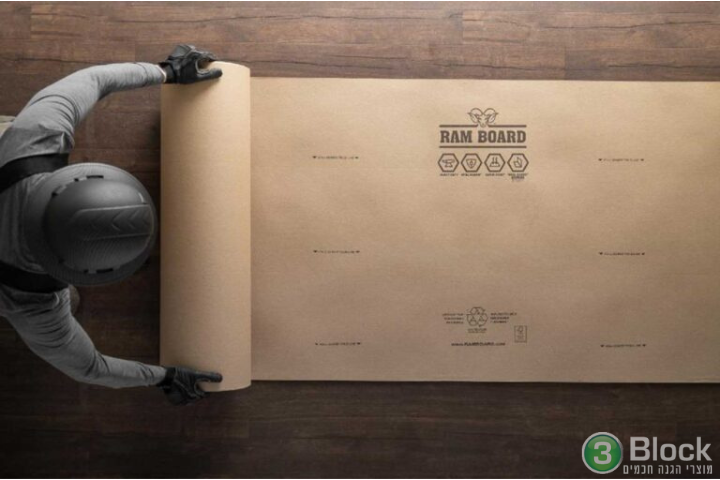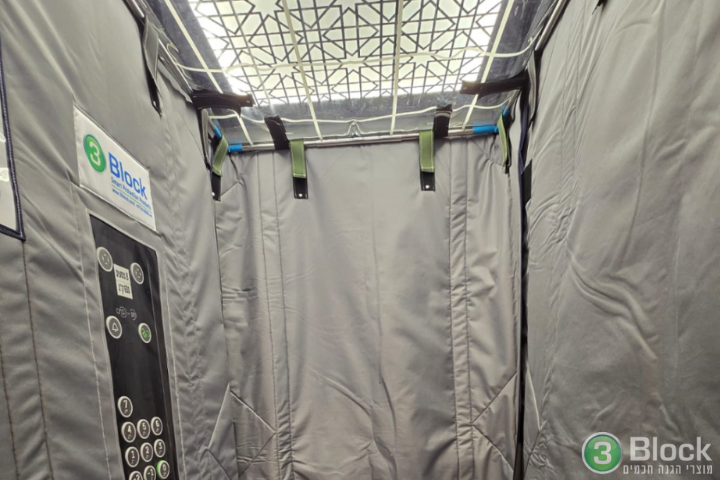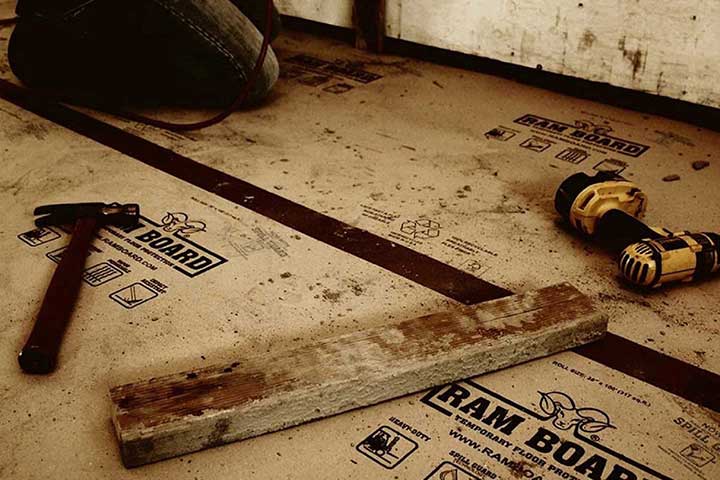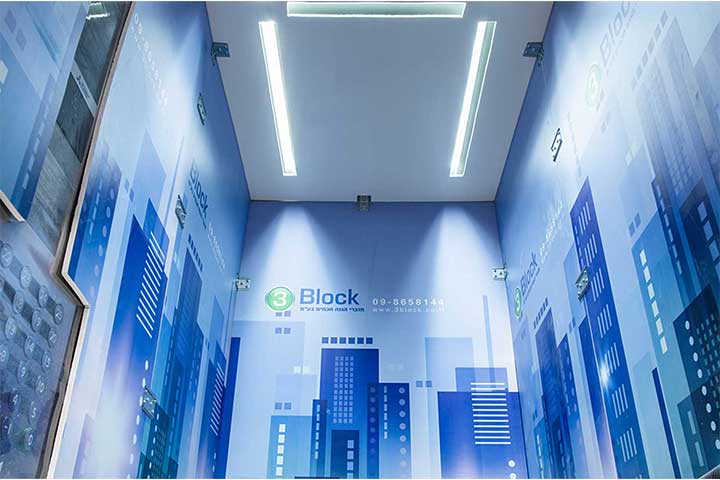Protecting your assets comes first in the quick construction and renovation world. Elevators are essential and often underappreciated components used in daily life. These sophisticated vertical transportation systems are vulnerable to costly damage during construction activities, material transport, and even tenant move-ins, ranging from unattractive scratches and scuffs to more serious dents. Ensuring strong elevator protection is about more than simply saving on repair costs; it helps to keep the aesthetic appeal of your property, guarantee operational continuity, and, most importantly, uphold safety standards throughout the project lifespan. This article looks at the need for elevator protection and provides advice on choosing the best appropriate material for your own requirements.
Overview of Protection Materials
Each is designed with particular benefits for different degrees of impact risk, protection duration, and budget considerations; the market provides a range of elevator protection materials. Three well-known kinds—fabric, PVC (polyvinyl chloride), and wood will be our main concentration. Each of these materials contributes particular benefits to the table; therefore, they are appropriate for a range of applications, ranging from light residential remodeling to big industrial buildings. Learning the properties of each will help you to make an informed choice to cost-effectively and reliably safeguard your lift.
What is an Elevator Protection?
Definition and Function
Elevator protection is the short-term use of materials and methods on the inside of an elevator car, like the walls, floors, and ceilings, to keep them from getting damaged when the elevator is very busy. This could mean building something, doing a big renovation, or moving heavy things like furniture, appliances, or construction trash. These protective covers mostly absorb shocks, keep things from getting scratched, and keep spills, dust, and dirt from getting in, which keeps the elevator in its original condition.
Importance of Building and Renovation
Elevator protection is more than just a safety measure on construction sites and during major renovations; it’s a must. Without it, elevators are always in situations that could damage their structure, which leads to:
- Costs of Maintenance Going Up: Most of the time, professionals need to fix dents, deep scratches, and scuffs, which can be expensive and take a long time.
- Shorter lifespan: Damage and constant use can weaken elevator parts and finishes, which may shorten their lifespan.
- Reduced Visual Appeal: A broken elevator reflects poorly on the quality and maintenance of the building.
- Operational Downtime: Serious damage could mean taking the elevator out of use for repair, hence upsetting project timelines and causing inconvenience.
High-quality protective equipment investments enable construction firms, building managers, and contractors to guarantee that elevators remain in great shape, therefore reducing long-term maintenance expenses and maintaining the operation and visual appeal of these essential transportation systems throughout the project and beyond. These safety measures are important parts of complete construction safety solutions in Israel and other places, along with the best standards for building protection goods.
Types of Elevator Protection Materials
Understanding the specifics of each material is key to making the best choice for your project.
1. Fabric Protection
Most of the time, fabric elevator protection is made of strong, heavy-duty cloth that is often reinforced or woven to make it even stronger. These covers are very flexible, easy to put on, and can be used again and again, which is why they are so popular for less serious protection needs.
Advantages
- Lightweight and Easy to Handle: Fabric covers are easy to move and put on, and they don’t need any special tools.
- Customizable Fit: You can change the size and shape of these to fit different elevators, making sure they cover everything.
- Protection Against Minor Impacts: This is a great way to keep scratches, scuffs, and small impacts from happening.
- Cleanable and Reusable: Fabric protection is often cleanable, making it a cost-effective and eco-friendly choice for many projects.
Fabric protective covers for elevators are highly recommended for residential buildings, office complexes, and small to medium-sized commercial properties where the primary concerns are ease of installation, aesthetic preservation, and reusability. They are particularly effective during tenant move-ins/move-outs and light renovation work. 3Block offers fabric elevator protective suits, which are made of decorative fabric sheets reinforced with PVC coating and feature an inner REBOND sponge for maximum protection against blows, scratches, and bruises. They also include a transparent PVC ceiling and a strong, colored PVC floor with an aluminum threshold for accessibility. These suits are easy to assemble and disassemble without drilling and can be conveniently folded for storage. Learn more about them at Fabric Elevator Protective Suit.
Limitations
- Limited Heavy-Duty Capability: Fabric doesn’t work as well when there is heavy machinery or a high risk of impact.
- Not Suitable for High-Risk Areas: It may not provide sufficient protection in areas where sharp objects or heavy loads are frequently encountered.
2. PVC Protection
PVC (polyvinyl chloride) is a strong, waterproof, and very durable material that can be used to protect elevators. It is well-known for being able to handle a lot of different things, like water, impact, dirt, and heavy use. This makes it a must-have in tough construction sites.
Advantages
- Strong, Long-Lasting, and Resistant: PVC is better at resisting wear, tear, and abrasion than other materials.
- Waterproof and Easy to Clean: Its non-porous surface keeps spills from getting on it and makes it easy to wipe down.
- Long-Term Durability: PVC elevator protection is great for long-term protection.
- Better Resistance to Impacts: Its strong nature makes it very good at protecting against moderate to heavy impacts.
For big buildings, big renovation projects, and active construction sites where longer protection periods and more durability are needed, PVC elevator protection is the best option. 3Block’s PVC plastic elevator protective suit is designed for intensive use during construction or renovations. It is made of strong 500-micron-thick PVC sheets, has REBOND sponge bases on the inside for cushioning, and has a strong 2 mm PVC floor with an aluminum threshold. The clear ceiling lets in light while also keeping things safe, and the custom sizes make sure it fits perfectly. This item protects better against dirt, scratches, and impacts than others. You can learn more at PVC Plastic Elevator Protective Suit
Limitations
- Heavier and Bulkier: PVC can be heavier and harder to move and store than fabric.
- Installation Difficulty: Some PVC systems may need more tools or knowledge to set up the first time.
3. Wood Protection
Custom-cut plywood panels, often made from OSB (oriented strand board), are usually used to cover the inside walls of the elevator for wood elevator protection. This material is the strongest choice because it offers the best protection against heavy impacts and very harsh conditions.
Advantages
- Wood panels are the best way to protect high-traffic areas from heavy impacts.
- Tough and heavy equipment. They can easily handle the forces of heavy machinery and rough materials.
- Structural Integrity: The stiffness of wood protects the inside of the elevator from strong outside forces.
Wood protection is ideal for large commercial projects, industrial projects, and areas with extensive heavy construction. 3Block wooden elevator protective suit is an elegant and economical solution for maximum protection during long periods, including construction, renovations, and the building occupancy phase. It is constructed from durable 9 mm OSB wood panels, featuring specially designed forging means for angle joints and plates, ensuring long-term durability. It integrates REBOND sponge bases for cushioning, an OSB wooden floor with an access angle for wheelchairs, and a 9 mm thick OSB wood ceiling. Switchboard covers are made from clear PVC. Explore more at Protective Suit for a Wooden Elevator.
Limitations
- Heaviest Option: Wood is significantly heavier than fabric or PVC, making installation and removal more physically demanding.
- Limited Customization (Aesthetic): While highly functional, wood protection offers less aesthetic versatility.
Factors to Consider When Choosing Elevator Protection
Building Type and Size
- Small Residential: Fabric protection is a good and cheap option.
- Large Commercial: PVC or wood provides strong and long-lasting protection.
- Industrial Sites: Need the most protection wood can give.
Duration of Protection Needed
- Short-Term Projects: Fabric protection is ideal.
- Medium-Term Projects: PVC is reliable and long-lasting.
- Long-Term Projects: Wood protection prevents serious damage over time.
Level of Impact Risk
- Low Risk: Fabric is usually enough.
- Medium Risk: PVC is a good choice.
- High Risk: Wood is essential for maximum protection.
Budget and Cost Effectiveness
- Fabric: Cheapest upfront and reusable.
- PVC: Mid-range cost with long-term durability.
- Wood: Highest cost, but prevents expensive repairs.
Why 3Block’s Elevator Protection Products Stand Out
High-Quality Materials
3Block offers top-tier elevator protection materials, including fabric, PVC, and wood, all sourced and produced for optimum endurance and performance. To guarantee customers get items made to last and thick enough to be effective, their product descriptions emphasize strong construction, like the 9 mm OSB wood panels for their wooden suits and the tough 500 micron thick PVC sheets for their PVC suits.
Custom Solutions
3Block is great at offering customized protection plans. Their products are made to fit the exact size of your building’s elevators, making sure they fit snugly and securely for the best protection. This ability to customize, along with the fact that it can be put together and taken apart easily without special tools, ensures that the right material is used for each project, which guarantees smooth installation and the best performance.
Customer Satisfaction and Testimonials
The careful design and complete features of 3Block’s products, together with warranties (e.g., a three-year warranty on fabric suits), highlight a dedication to client happiness. Their focus on durability, ease of use, and effective protection fits with what construction companies and building managers in Israel need from reliable elevator protection suppliers.
Conclusion
Deciding between fabric, PVC, and wood elevator protection depends on a thorough grasp of your project’s particular needs. For residential and light commercial environments, fabric provides lightweight, reusable protection for little impact and short-term use. For medium- to long-term projects with little impact risk, PVC offers a strong, waterproof, and simple-to-clean solution. Wood offers unmatched defense against severe impacts in the most difficult settings, making it vital for industrial and large-scale commercial projects.
Selecting the appropriate elevator protection is ultimately a strategic investment that protects your assets, simplifies processes, and raises safety. It guarantees constant operation throughout the construction or renovation project, preserves elevator aesthetics, and avoids expensive damage. Choosing the most suitable protective coatings for construction sites will help you to guarantee the integrity of your elevator and the success of your project by thoughtfully evaluating your building type, length of project, and level of risk.
Contact Us
Considering your elevator protection needs? Don’t leave your valuable assets vulnerable. Contact us today to get a personalized consultation and quote for the most appropriate elevator protection materials for your projects!


